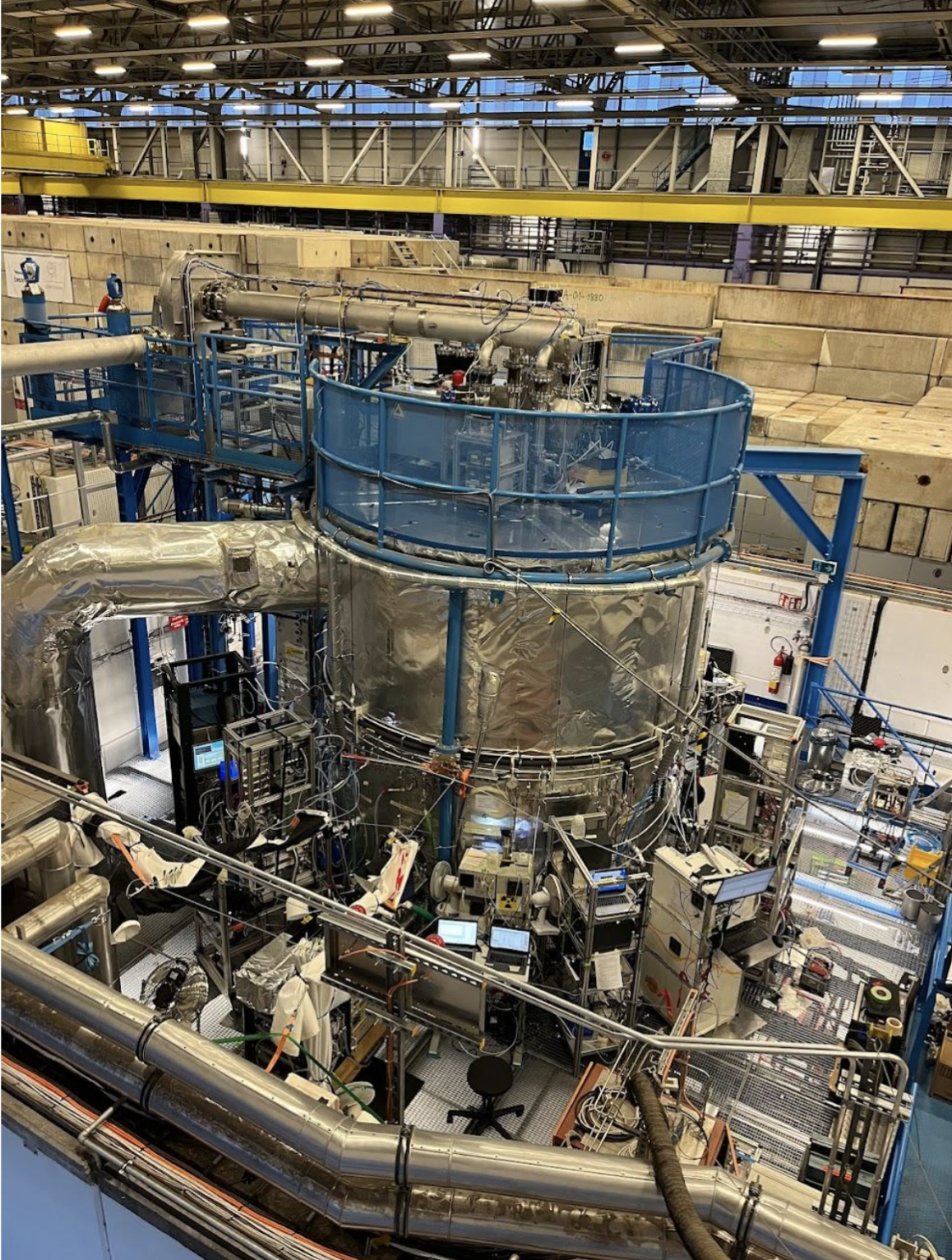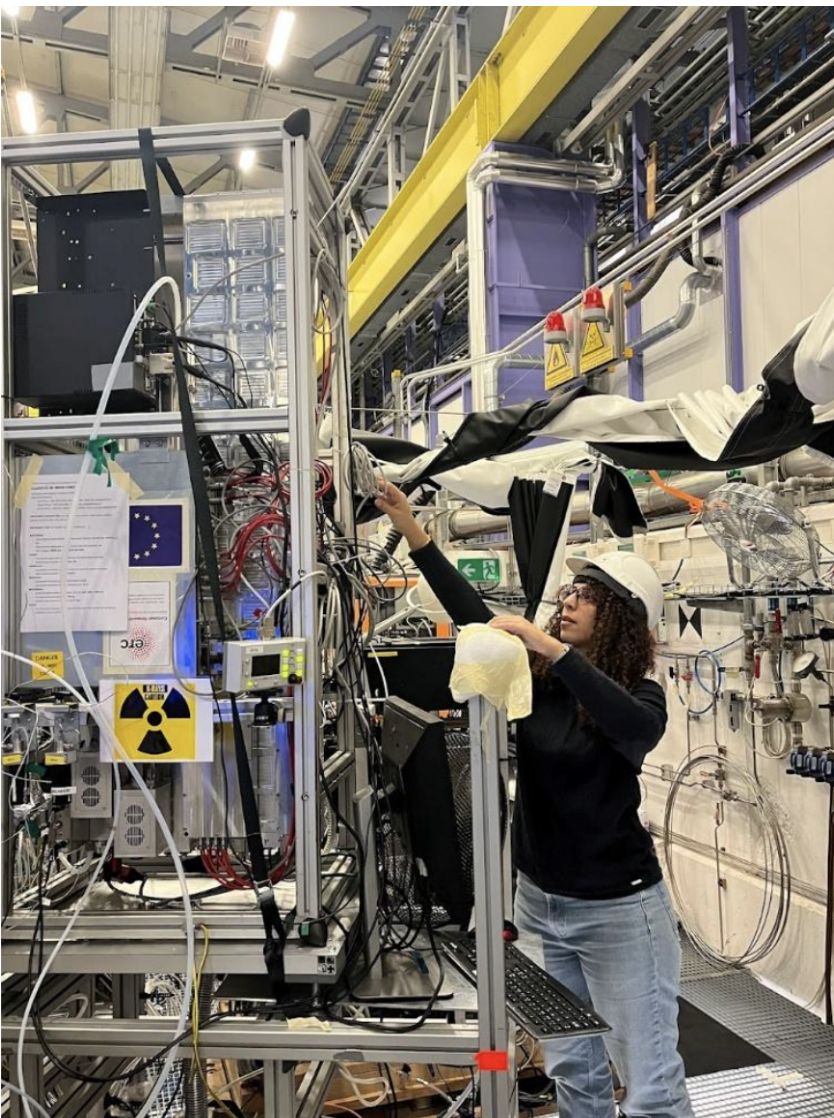CLOUD experiments show that trees can make their own clouds.

Atmospheric aerosols are tiny solid or liquid droplets suspended in the air. They are all around us, emitted from a variety of natural and anthropogenic sources. Although aerosol particles are too small to be seen with the human eye, they have a significant impact on the Earth's climate. Increased aerosols reflect and absorb more incoming solar radiation and make clouds brighter and increase their coverage. Given the complexity of our atmosphere, and the millions of different molecules present, understanding aerosol formation and aerosol-cloud interactions remains limited. CERN's CLOUD experiment debuted in 2009 to unravel the various mechanisms involved in atmospheric particle formation. It is an "atmosphere in a box" concept, in which a chunk of the atmosphere is simulated and scrutinized. CLOUD has greatly expanded our understanding of the mechanisms and pathways for aerosol formation in the atmosphere, reducing the uncertainties for their impact on climate.

CLOUD chamber as seen from top of the East Hall (T11 beam line). The chamber is surrounded by 50 instruments that measure continuously to characterize both the physical and chemical properties of gases and particles and their evolution inside the chamber.
CLOUD biogenic experiments findings
The CLOUD chamber, built with CERN know-how, has substantially lower pollutants than other chamber experiments, allowing us to measure, at the molecular level, particle nucleation and growth from a precisely controlled combination of vapours. CLOUD is unique in its capacity to quantify nucleation enhanced by ionisation from galactic cosmic rays between ground level and the top of the troposphere, using a CERN pion beam. During experimental campaigns, our team assembles the most comprehensive array of mass spectrometers and particle sizers anywhere in the world to characterize the physical and chemical states of the particles and vapours in the CLOUD chamber. CLOUD, like previous CERN experiments, combines fundamental investigations and modelling within a single team of international researchers. In the CLOUD chamber, we can replicate the atmosphere during the pre-industrial era before any pollution from anthropogenic emissions.

CLOUD team members, Lubna Dada and Boxing Yang on shift inside the control room to monitor the evolution of particles inside the CLOUD chamber upon the addition of new gases. ‘Banana’ is the code name for observing particles forming from precursor gases in the chamber. The name ‘banana’ was given to the diagram displaying the evolution of particle diameter and concentration as a function of time elapsed. The diagram resembles the shape of a banana curve.
In this study, we focus on studying aerosol particles and cloud seeds formed from natural emissions, by trees and other vegetation. Plants emit volatile organic compounds as a means of communication and protection against oxidative stress. Among these compounds are isoprene, monoterpenes, and sesquiterpenes. Studies have indicated that sesquiterpene emissions, in particular, increase when the plants are subject to stress from, for example, drought or biotic stress. How do these naturally emitted compounds affect particle formation?
To answer these questions, we simulated biogenic particle formation in the atmosphere. In practice, we designed specific experiments during which we injected biogenic organic vapours into the CLOUD chamber at the extremely low concentrations found in the atmosphere and quantified the aerosol formation and growth rates.
First, we injected pure compounds, namely isoprene, a monoterpene (α-pinene) and a sesquiterpene (β-caryophyllene) into the CLOUD chamber at atmospherically relevant concentrations and added ozone to simulate atmospheric oxidation. We studied the particle formation and growth from individual compounds and their mixtures. The experiments revealed that the oxidation of a natural mixture of isoprene, monoterpenes and sesquiterpenes in pure air produces a large variety of organic compounds– including a class called ULVOCs (Ultra-Low-Volatility Organic Compounds). As the name suggests, these compounds spontaneously condense to form particles very efficiently, which can then grow over time by further condensation of vapours to become large enough to seed cloud droplets – so-called cloud condensation nuclei.
In our study, we find that the ULVOCs drive particle formation. A small increase in ULVOC concentrations produces a large increase in particle formation rates. We find that sesquiterpenes are especially efficient at producing ULVOCs – much more than monoterpenes and isoprene combined. In fact, adding only two percent sesquiterpenes to a mixture of monoterpenes and isoprene doubled the rate of formation of new particles. This can be explained since sesquiterpene molecules contain 15 carbon atoms, while monoterpenes contain 10 and isoprene only 5. Sesquiterpenes therefore have a high yield of ULVOCs.

Occasionally, our instruments face challenges and need hands-on adjustment. In the picture, Lubna Dada checks the connections of the mass spectrometer measuring the chemical composition of clusters formed inside the CLOUD chamber.
Since vegetation under stress emits more sesquiterpenes, their contribution to aerosol and cloud formation is expected to become more important with a warming climate. Sesquiterpenes will now need to be included in climate models - alongside isoprene and monoterpenes - to improve their accuracy. This is especially important considering the expected continuing decrease in anthropogenic sulphur dioxide as per suggested directives and the simultaneous increase in biogenic emissions as a result of climate stress, which will lead to a reduction of anthropogenic particles in the atmosphere and an increase in biogenic particles.
Conclusion and outlook
Despite the complex mechanisms involved in the oxidation of biogenic precursors, we show that organic particle formation can be reduced to the simple, rate-limiting step of ULVOC nucleation, which is strongly enhanced by sesquiterpenes. Our paper thus opens a potentially rich vein of atmospheric chemistry research while illuminating the route to simplification and generalization needed for implementation of biogenic-related new particle formation in large-scale coupled climate and chemistry models.
Our results show that, despite their low mixing ratios in the atmosphere, sesquiterpenes play a critical role in new particle formation and early growth. This has so-far been overlooked in global climate models. Considering the expected increased emissions of sesquiterpenes with rising global temperatures, it is important for global models to account for the contribution of sesquiterpenes to particle formation in the atmosphere. Furthermore, with projected decreases in anthropogenic emissions, pure biogenic new particle formation is expected to become increasingly significant for the future climate.
Next, CLOUD wants to investigate what exactly happened during industrialisation, when the natural atmosphere became increasingly mixed with anthropogenic gases such as sulphur dioxide, ammonia, and other anthropogenic organic compounds.
It is intriguing that trees – like other life on Earth – seem to have evolved mechanisms to protect themselves from environmental stress.
References
Lubna Dada et al. ,Role of sesquiterpenes in biogenic new particle formation. Sci. Adv.9,eadi5297(2023). DOI:10.1126/sciadv.adi5297. URL: https://www.science.org/doi/10.1126/sciadv.adi5297
Further Reading
https://www.psi.ch/en/media/our-research/how-trees-influence-cloud-formation
https://ep-news.web.cern.ch/content/flotus-new-addition-cloud-experiment
https://ep-news.web.cern.ch/content/cloud-experiment-makes-its-own-clouds-study
https://ep-news.web.cern.ch/content/cloudy-climate-studies-cern
https://ep-news.web.cern.ch/content/cloud
